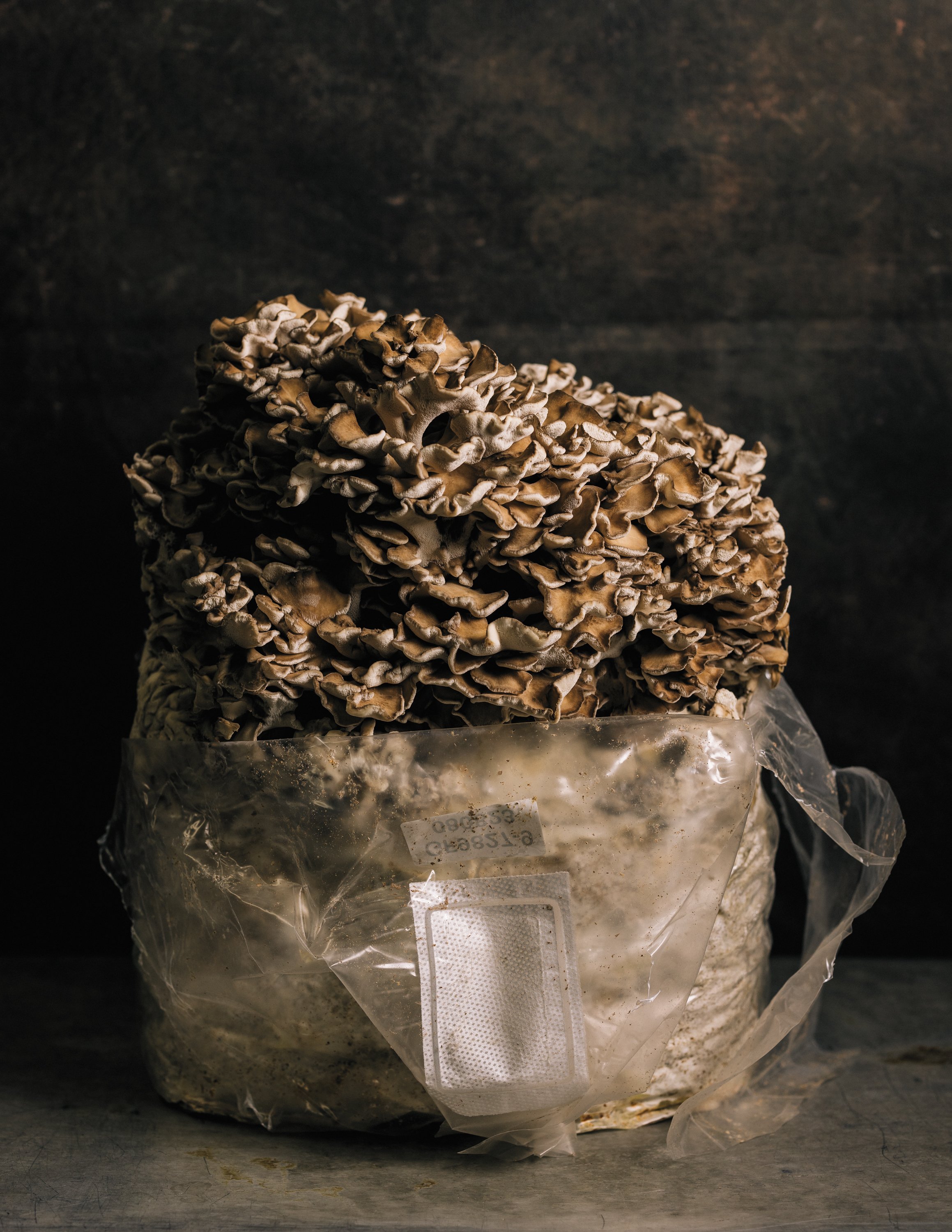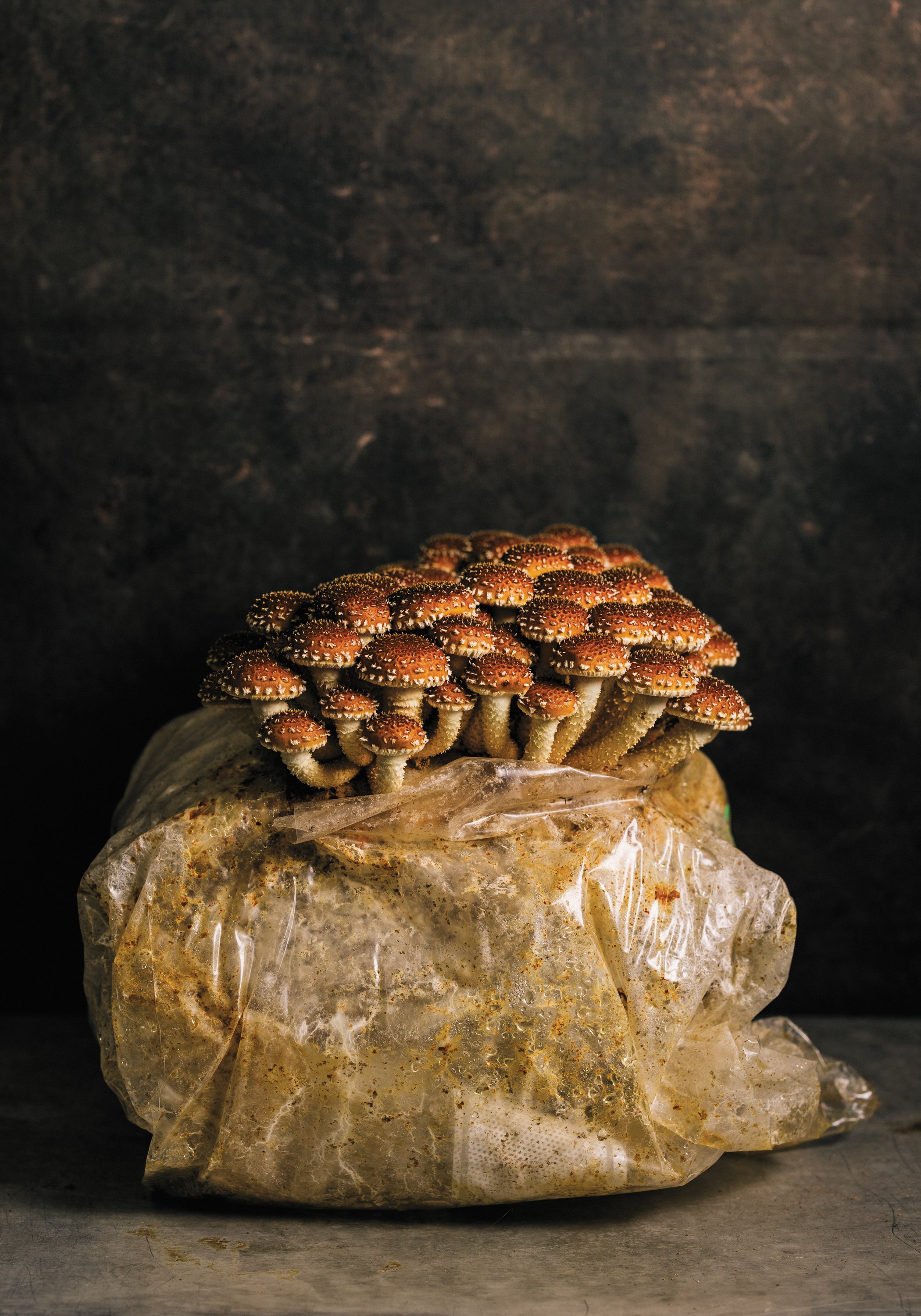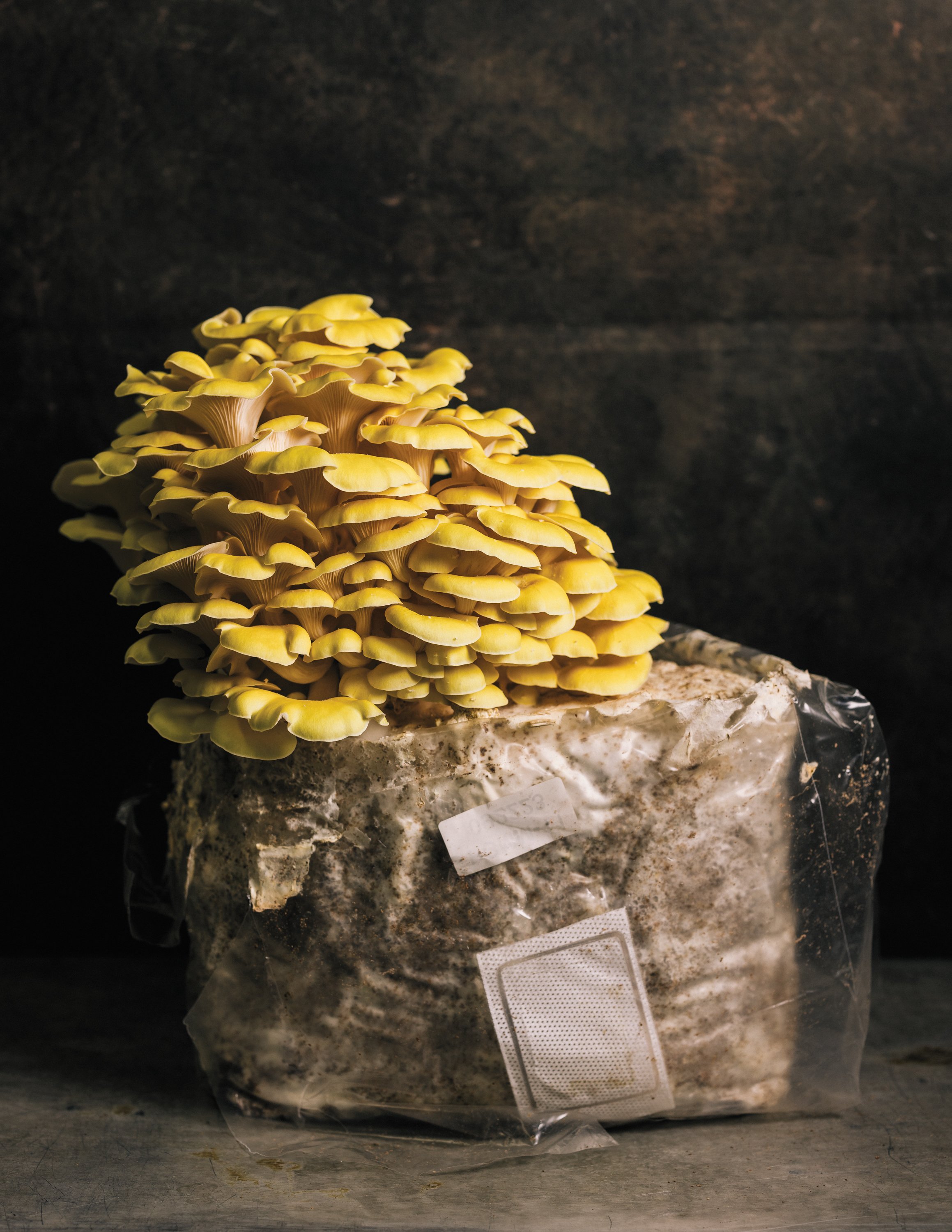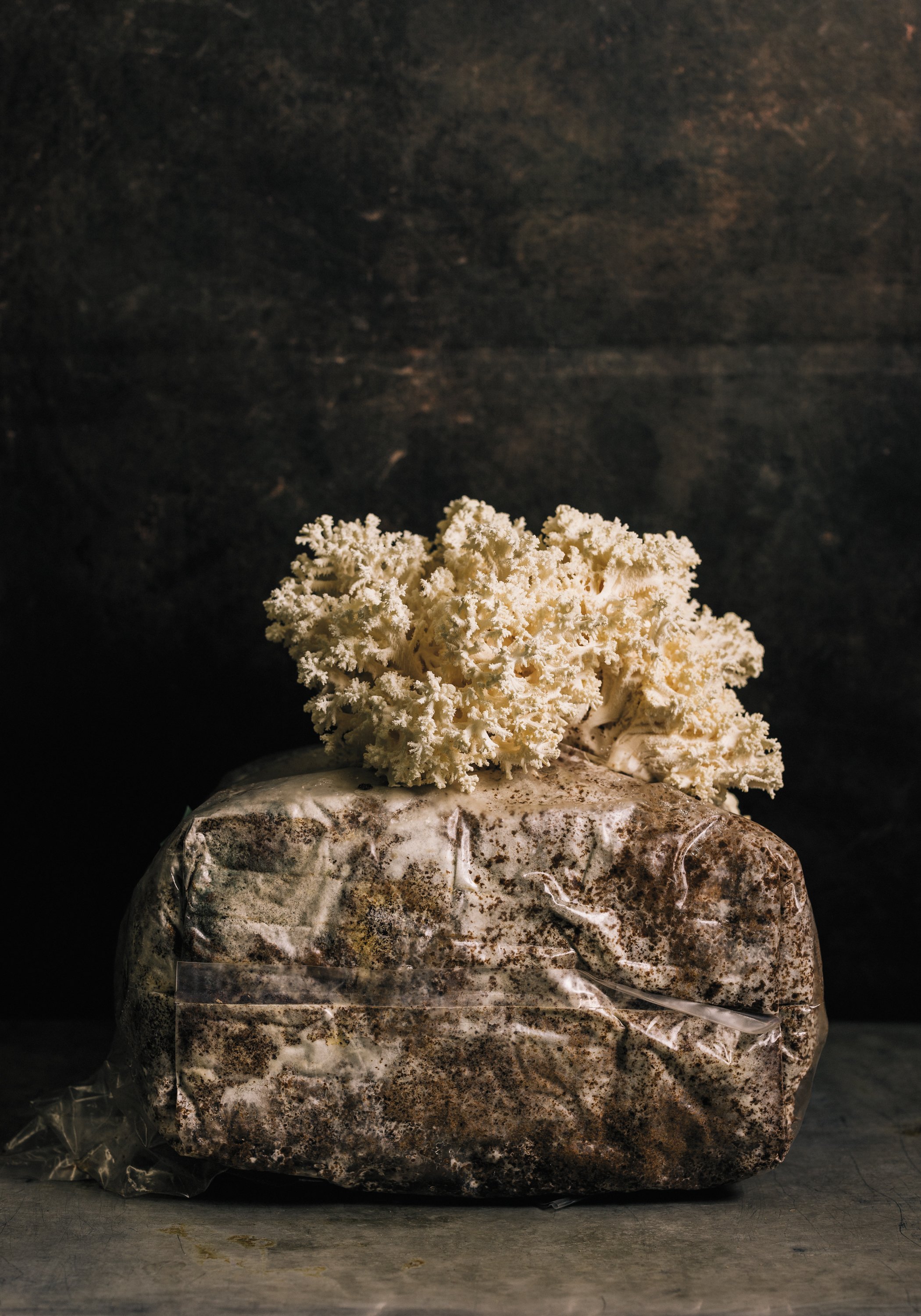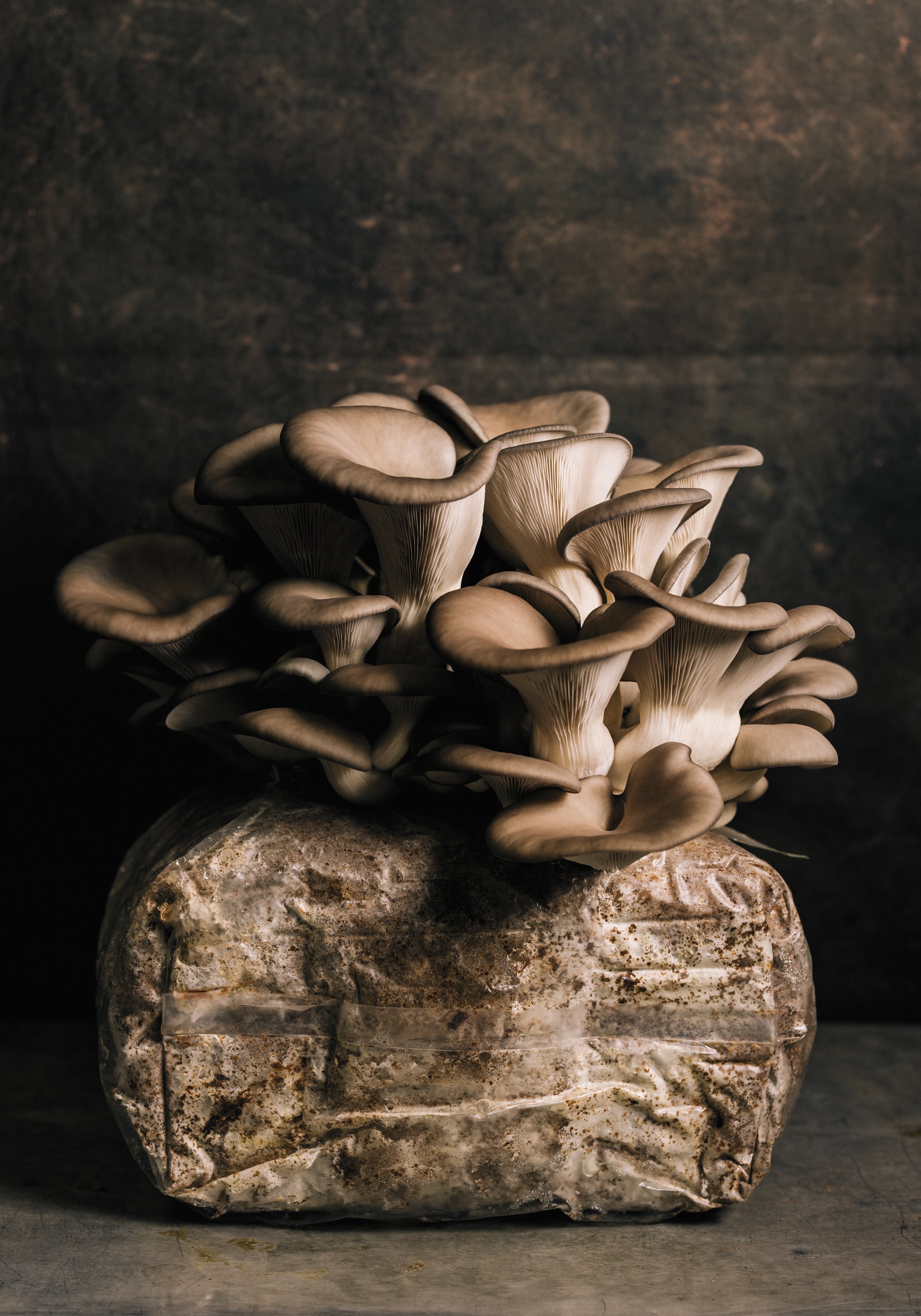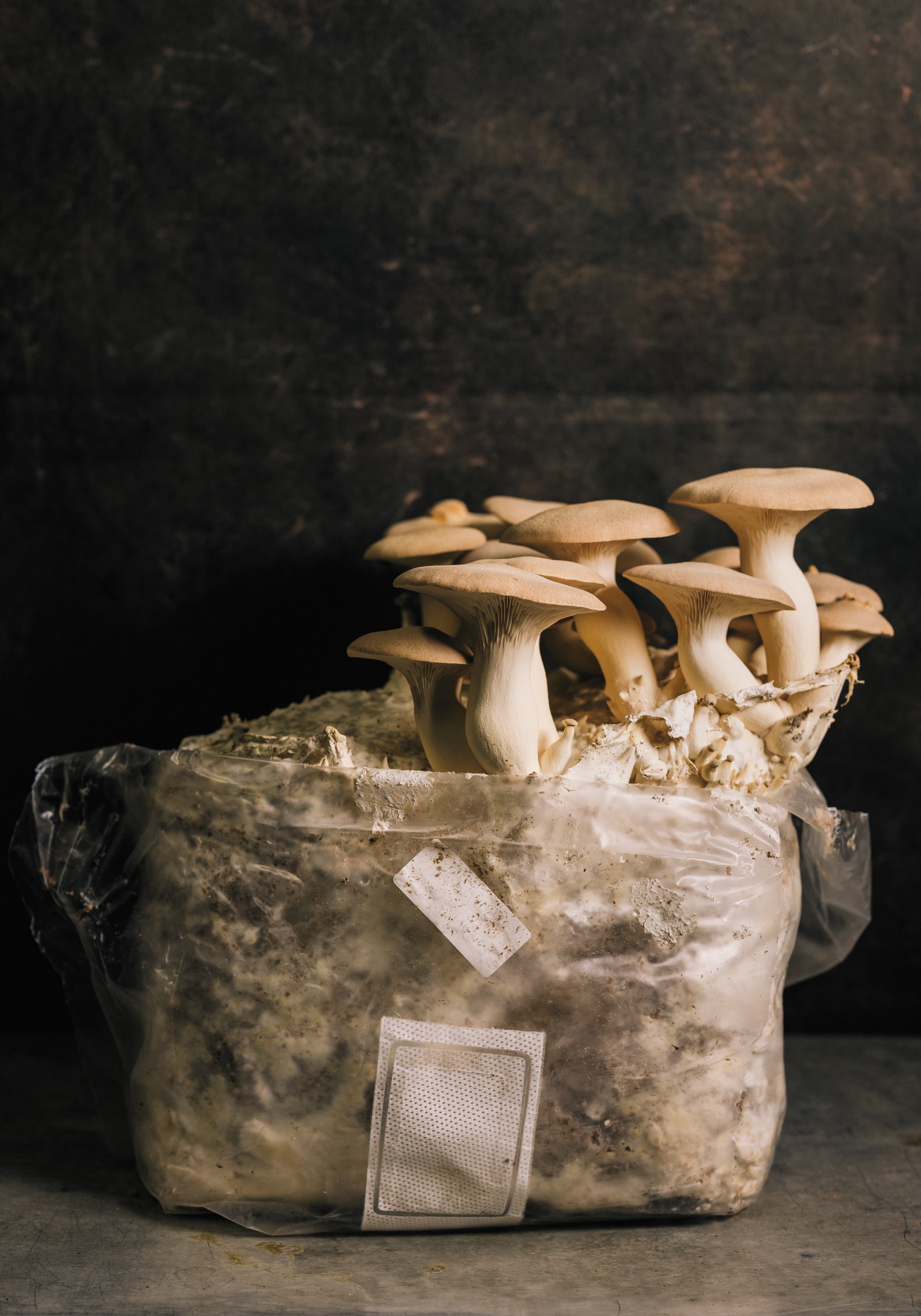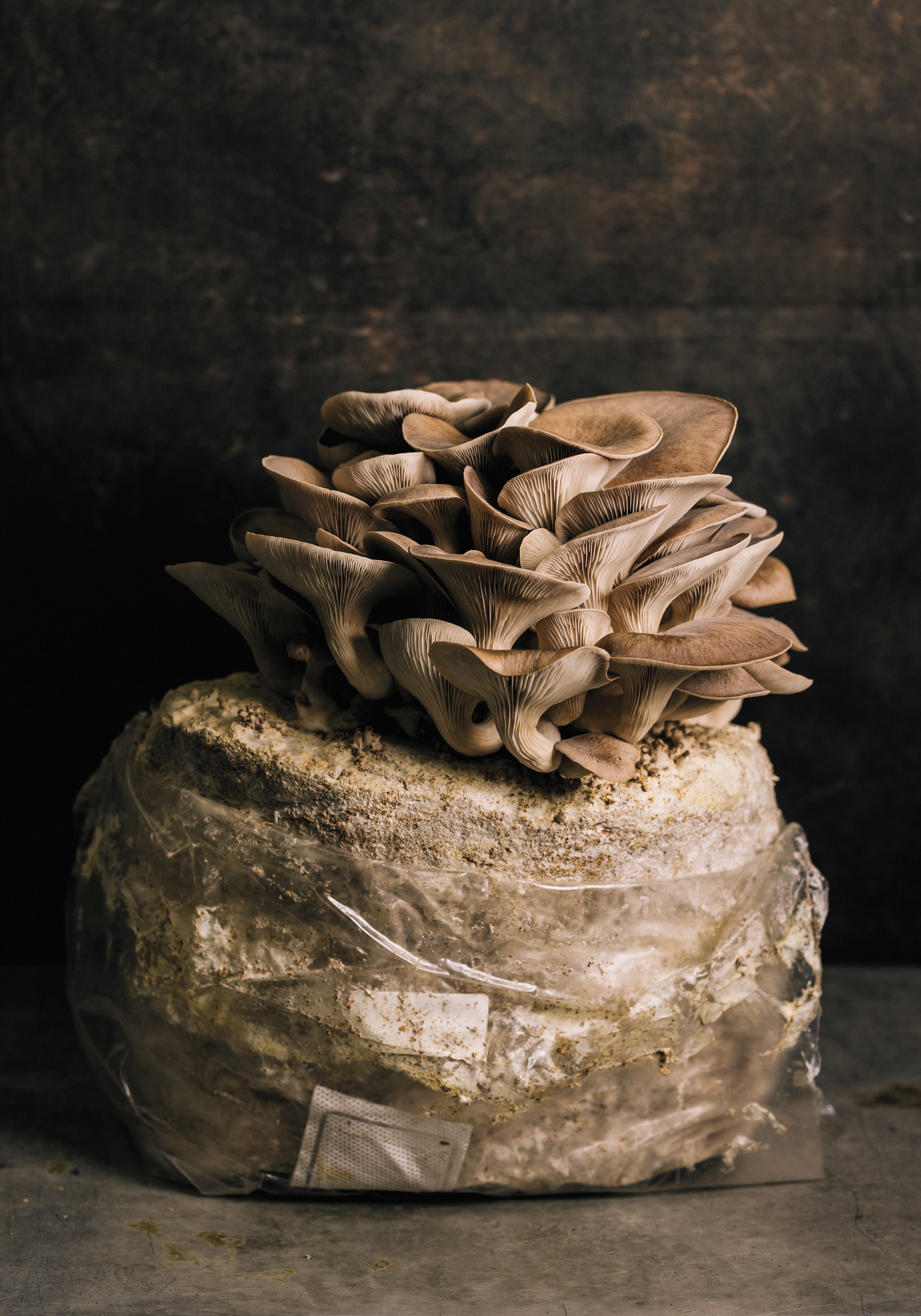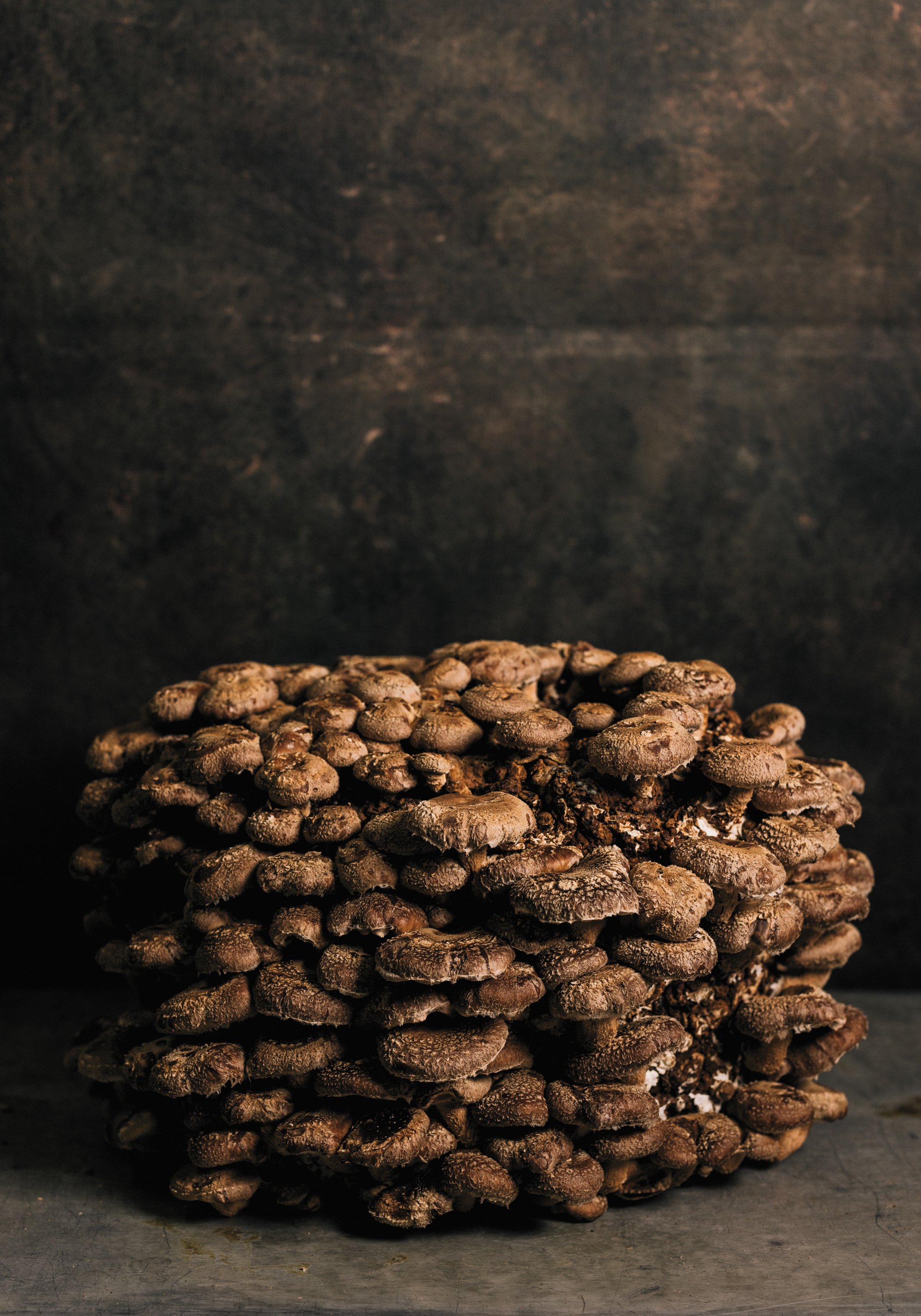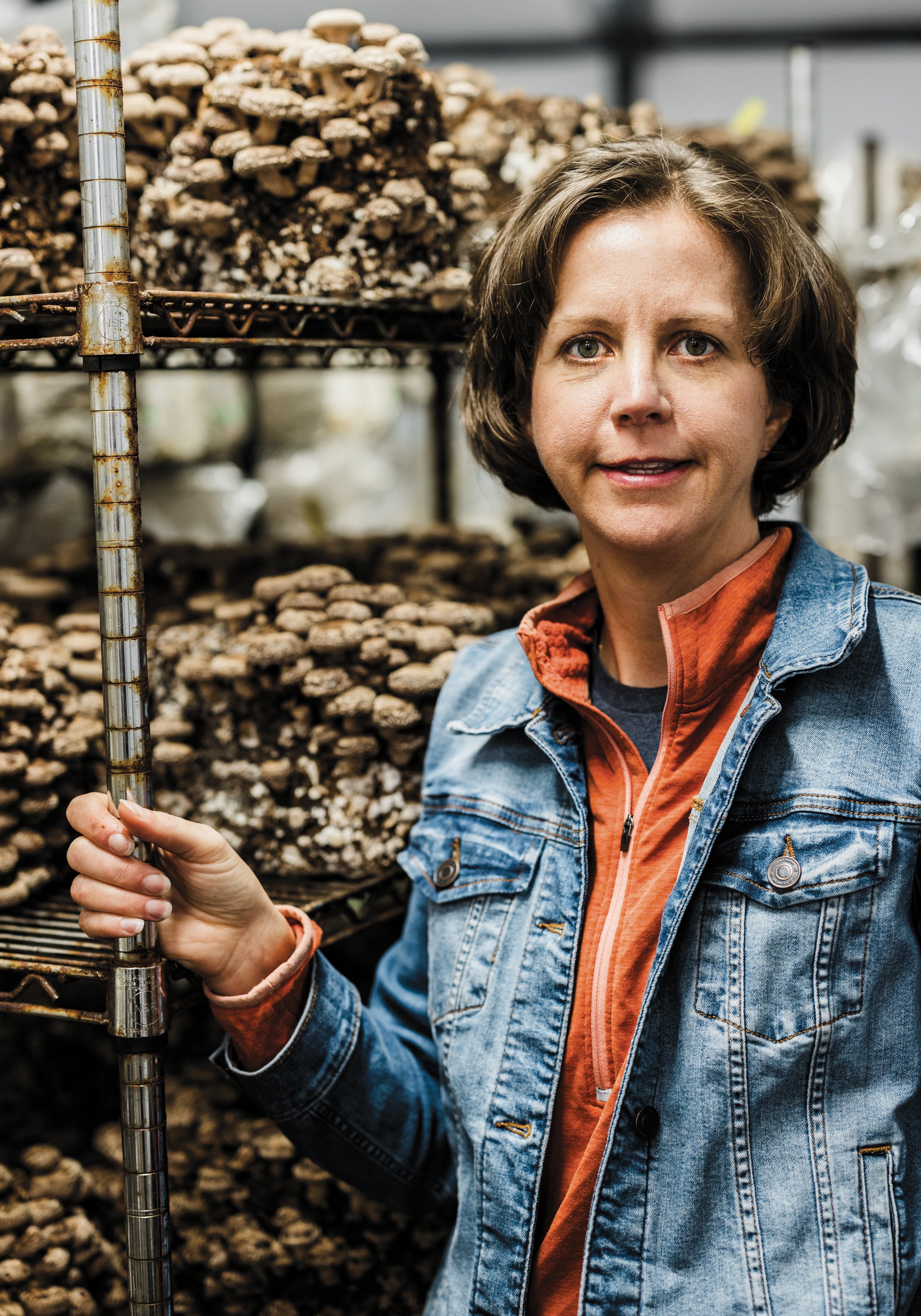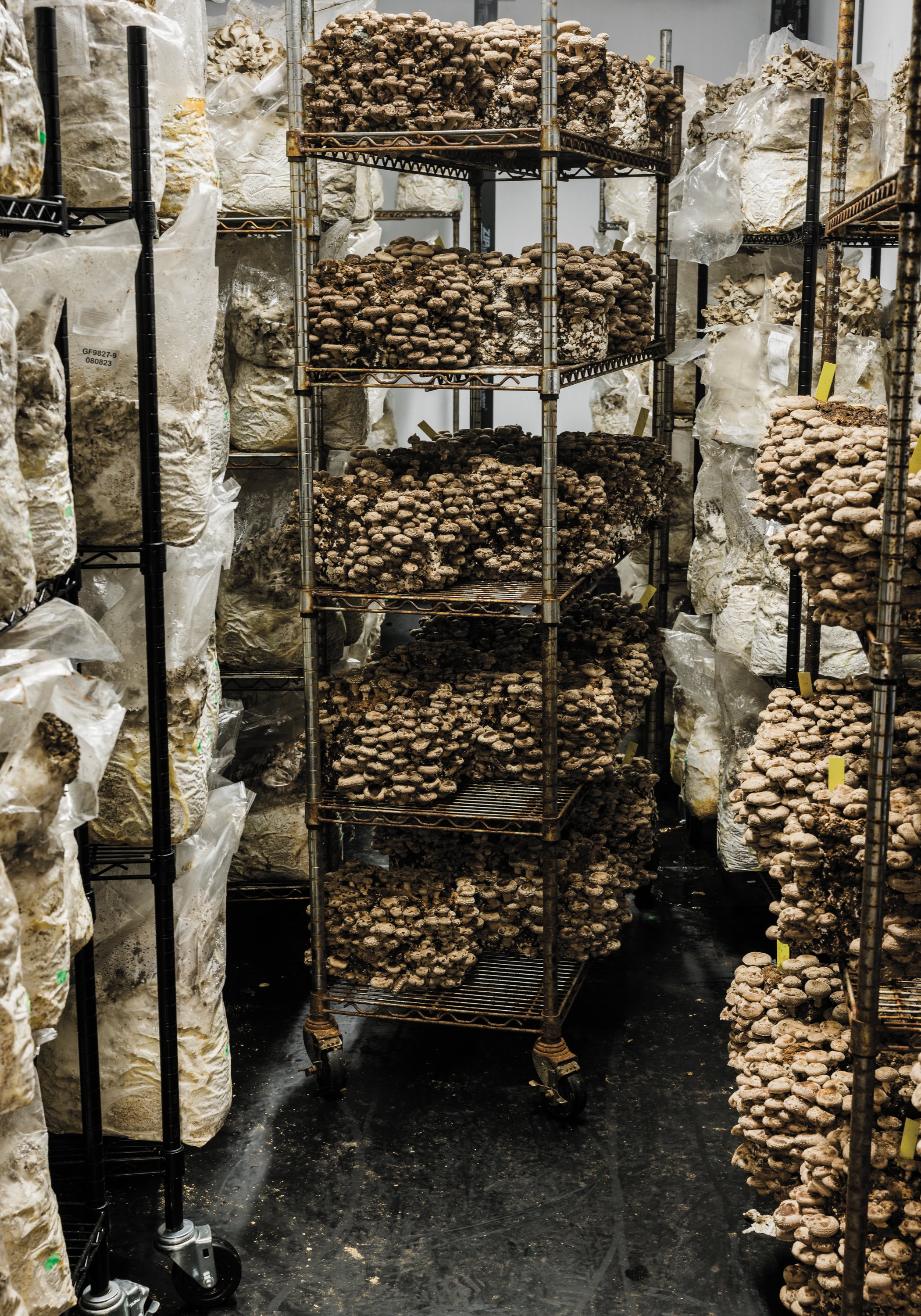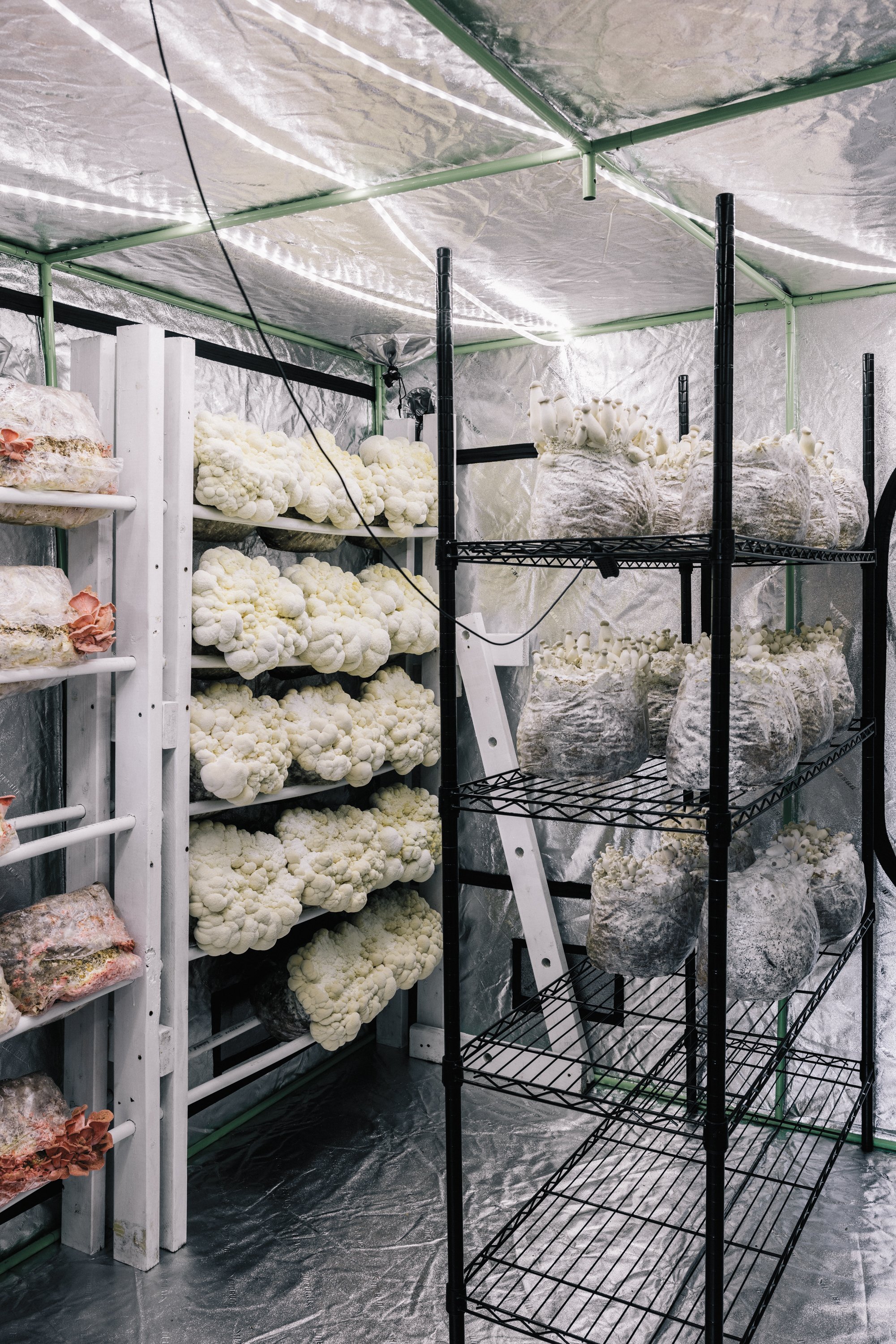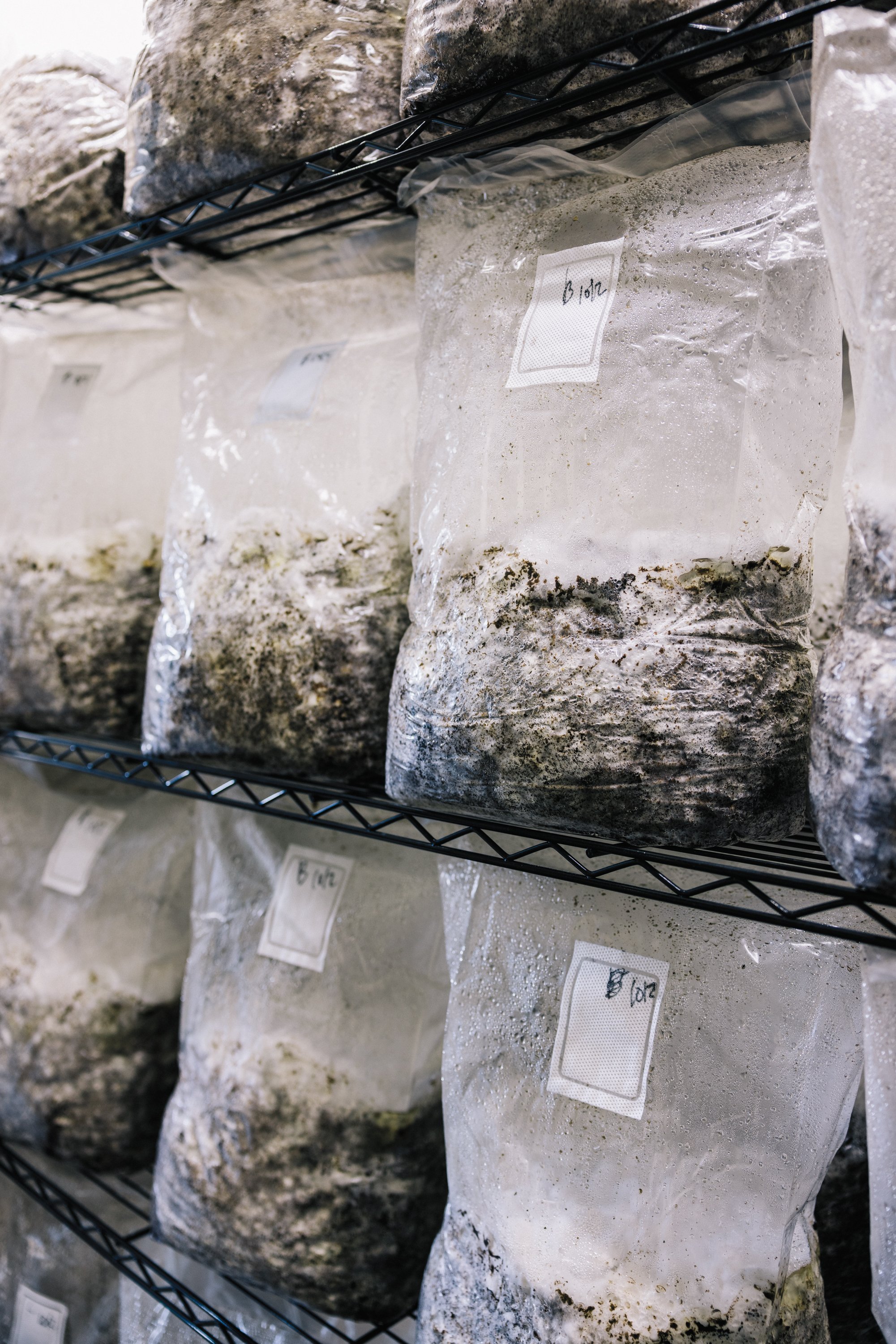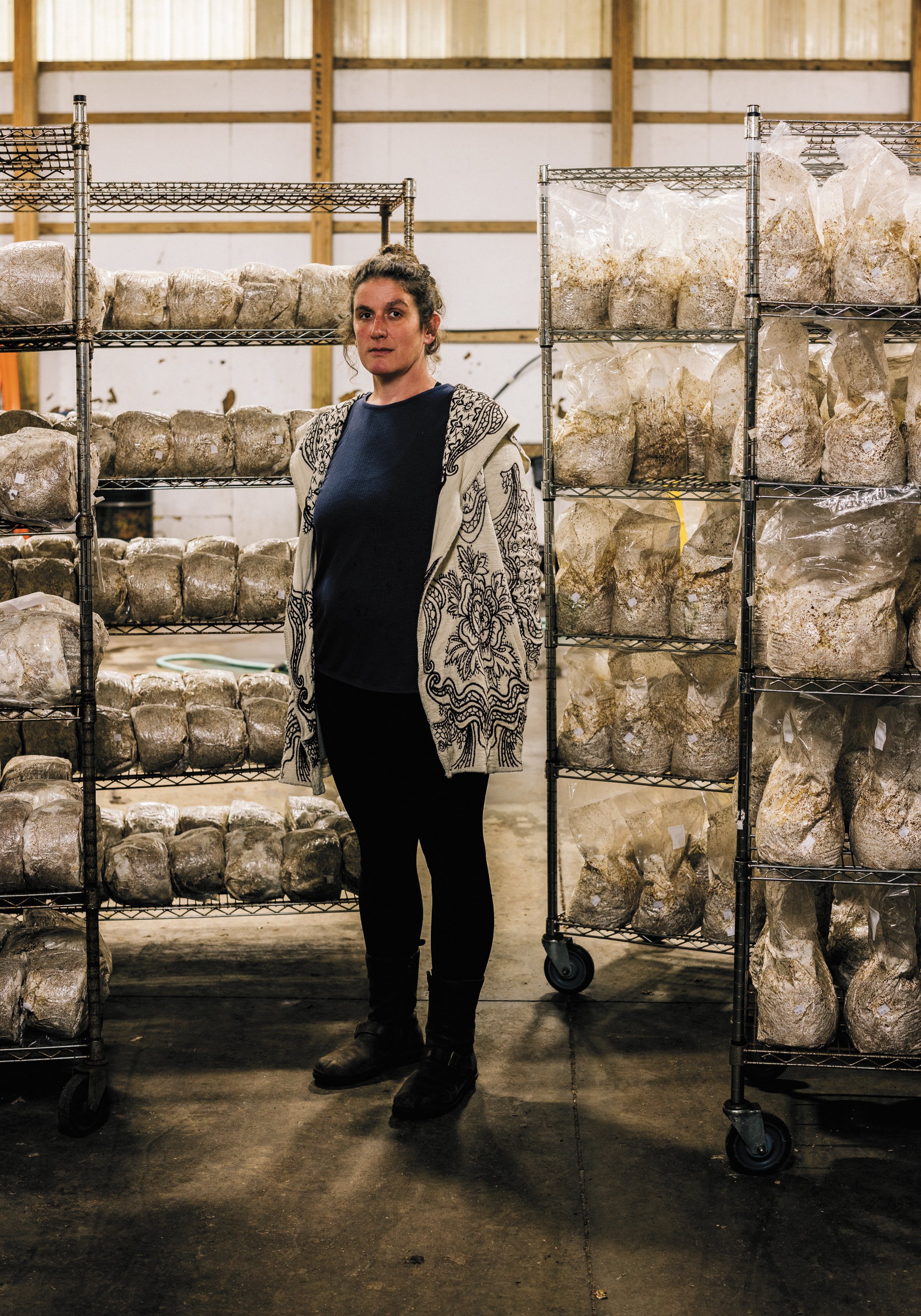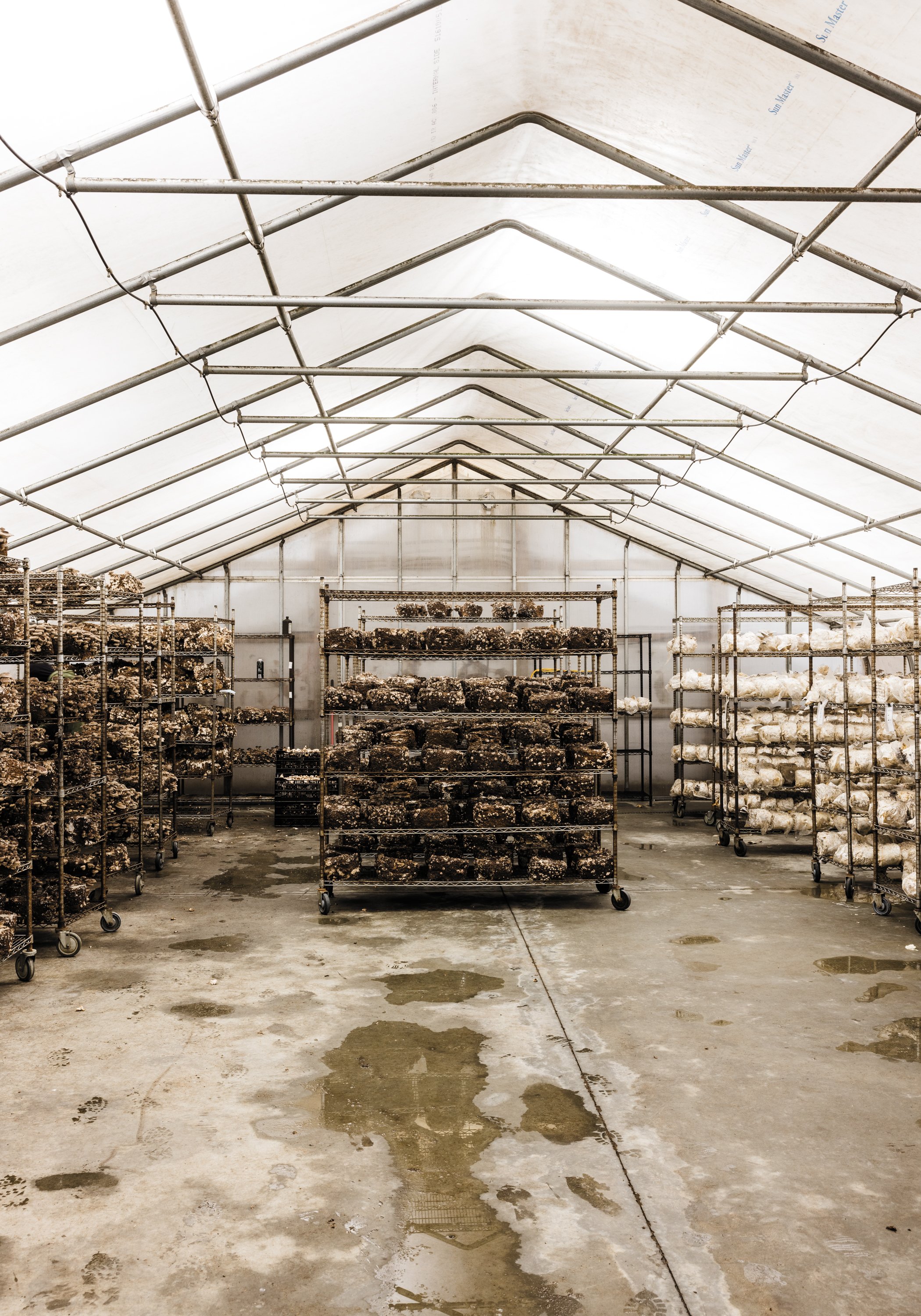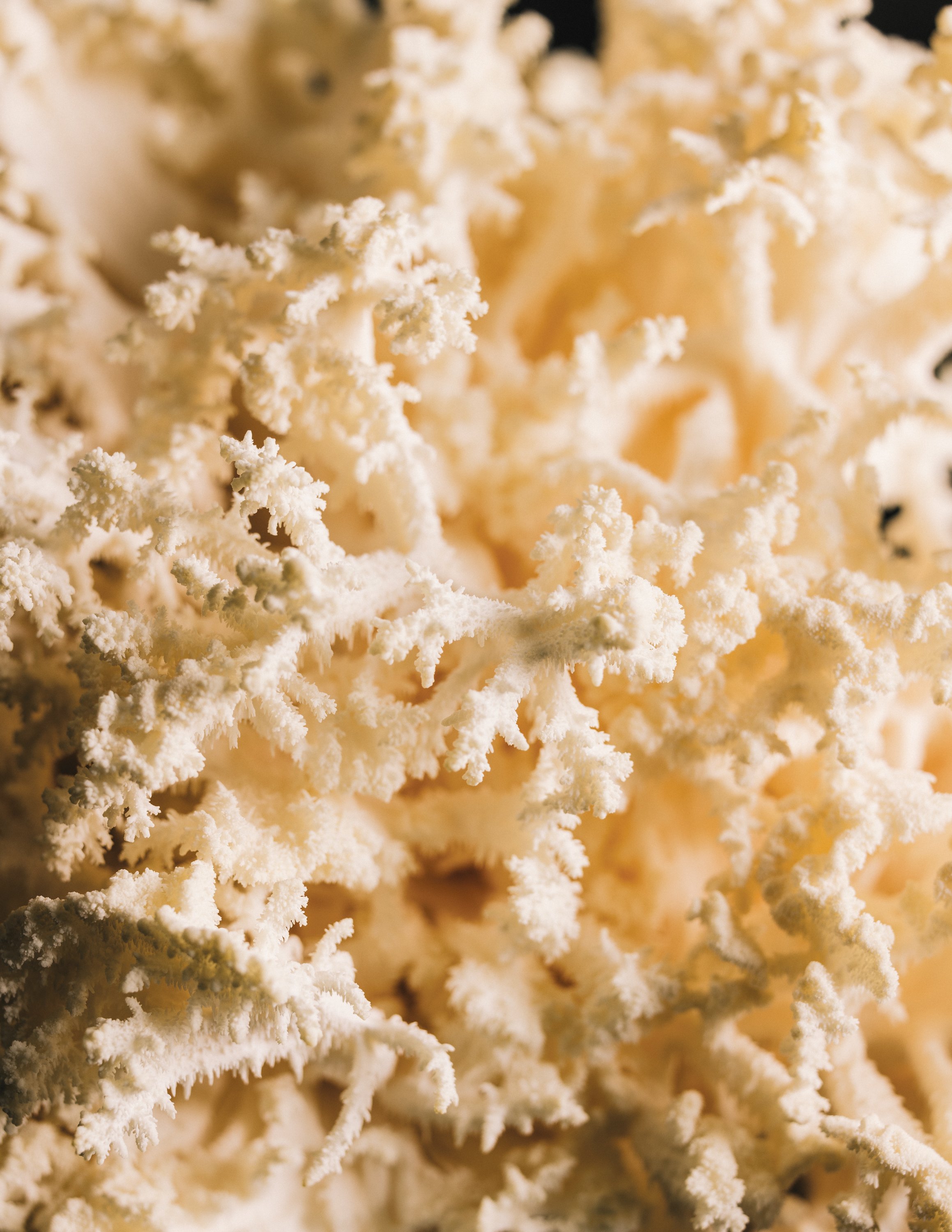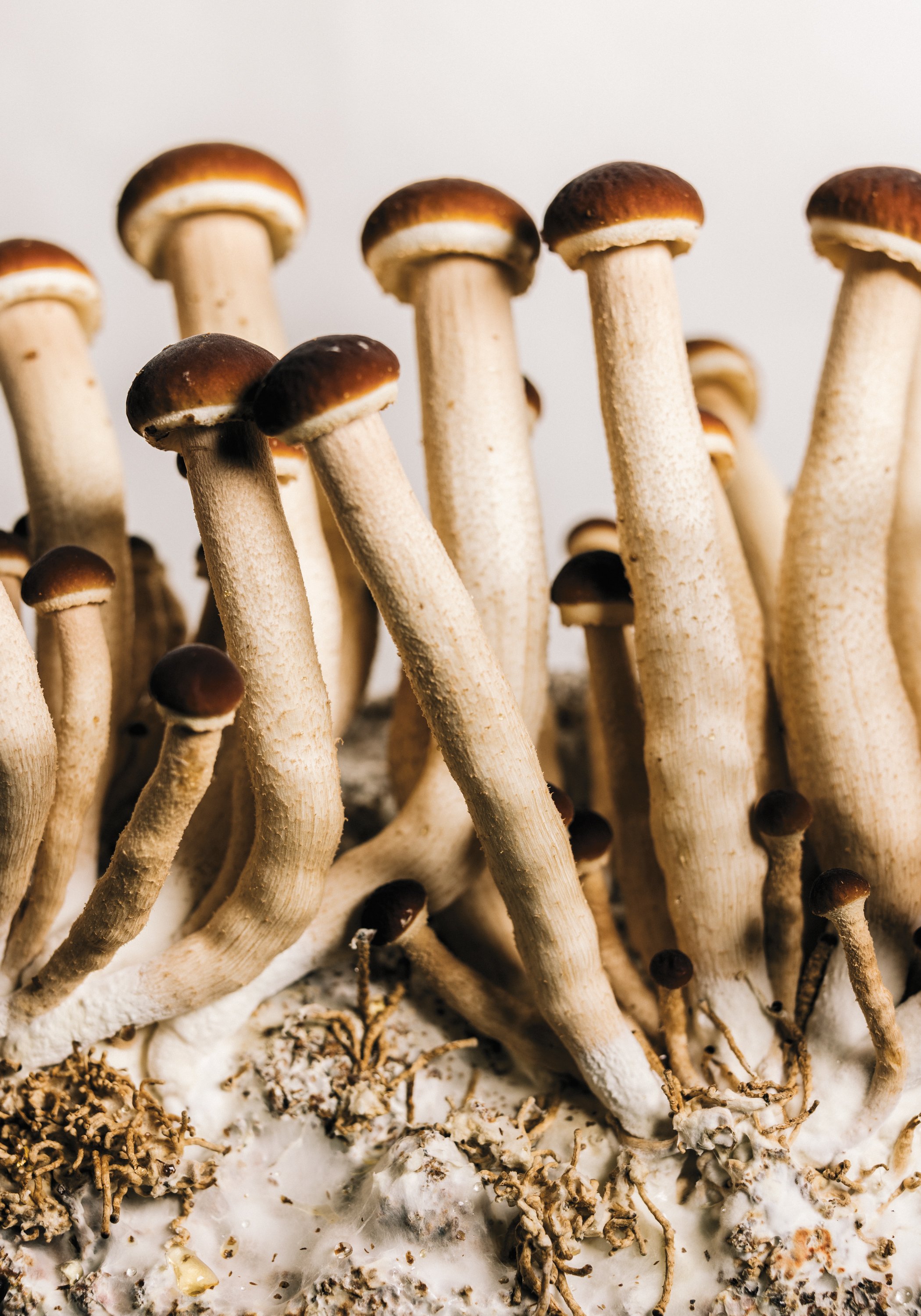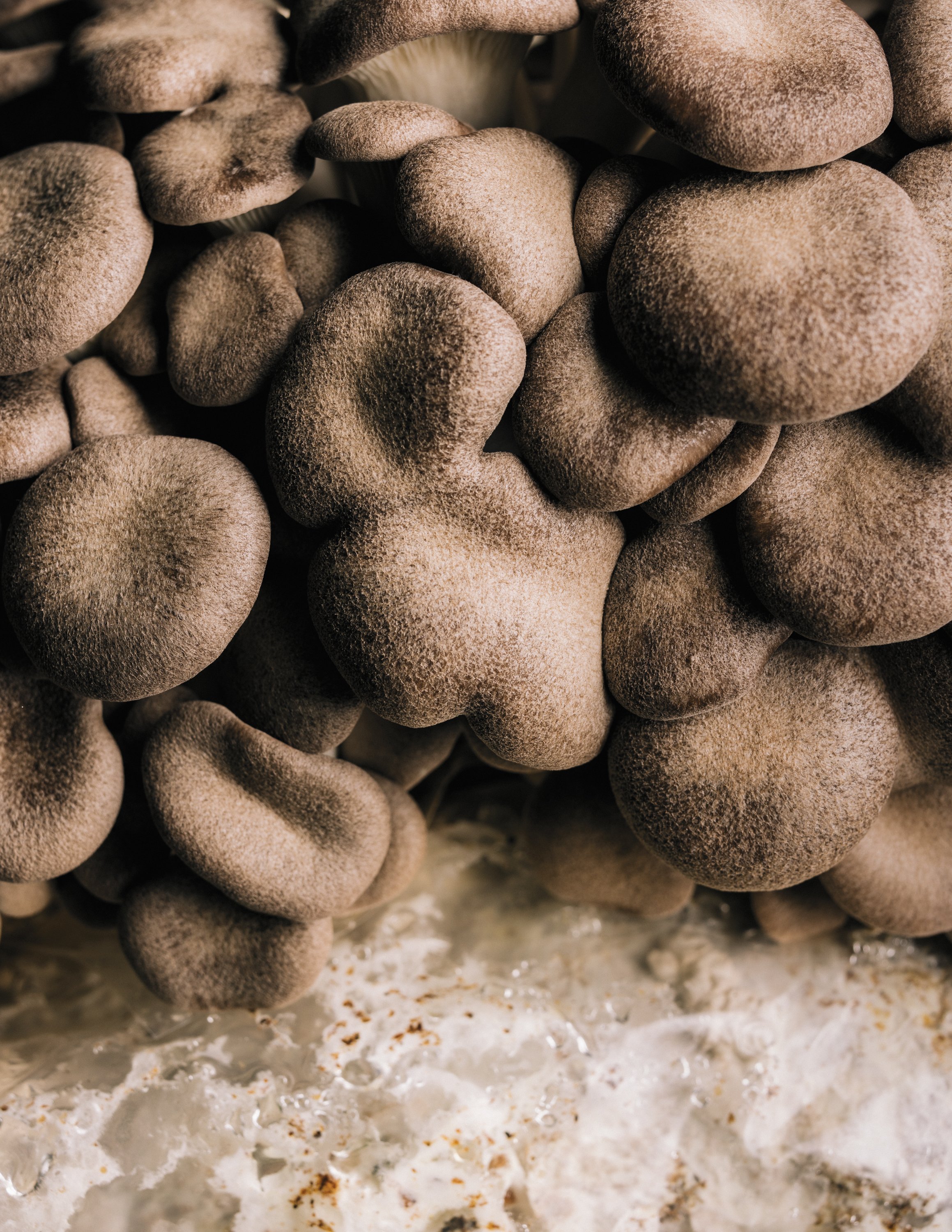Mass Mushroom Farms: Helping strengthen local food systems, one fungus at a time
Photos by Michael Piazza
Fourteen years ago, before Fantastic Fungi hit Netflix, before adaptogens like reishi and lion’s mane became popular, before fungi were cool— Julia Coffey started growing mushrooms in her basement.
After studying mycology at Evergreen State College in Washington and working for Fungi Perfecti, the mushroom company run by Paul Stamets (of Fantastic Fungi fame), Coffey moved back home to Massachusetts. She noticed that in an otherwise flourishing local food economy, mushrooms were underrepresented. So she invested in some at-home equipment and got growing.
Today, Coffey’s Mycoterra Farm runs out of a halfacre building in Deerfield, with a built-in farm store where they sell mushrooms on weekdays from 10am to 4pm, and they distribute to restaurants and retail outlets around the state. Other mushroom growers in Massachusetts have started popping up, too, selling their wares at farmers markets, in CSAs and to local restaurants.
“In my opinion, we need a strong mushroom component if we’re going to localize the food system,” says Elizabeth Almeida, owner of Fat Moon Mushrooms.
Fat Moon Mushrooms operates out of an old mill building in Chelmsford, fruiting mushrooms like shiitake, oyster, lion’s mane and maitake from inoculated blocks from a farm in Maine. Some other operations, like McGuire’s Mushrooms in Hingham and Cloutman Farms in Peabody, do the whole process at home— from scratch.
A quick fungus lesson: Most mushroom farms use a sterile tissue culture process. From just a tiny bit of mushroom tissue, they can grow mycelium, then use it to inoculate blocks of substrate—something the mushroom can feed on as it breaks down. Mushroom substrate is usually an agricultural byproduct like sawdust, wood chips or seed hulls.
Mushrooms grow quickly and efficiently—once they fruit, they’re ready to harvest in about seven to 14 days. “From one test tube you can grow thousands of pounds of mushrooms,” says Coffey. And this indoor process means that mushrooms grow year round.
But it’s a delicate process, requiring sterile environments and controlled temperatures. “It does need your full attention, I’ve learned,” says Kevin McGuire, co-owner and founder of McGuire’s Mushrooms. McGuire and his co-owner and partner, Kaylee Doyle, grow close to 200 pounds of mushrooms a week, all from their Hingham home, selling them to local retailers like Schubert Provisions in Braintree and at farmers markets—they’ll be at the Hingham Farmers Market all winter.
Lion’s mane is their most popular variety, says Doyle; they sell out their crop most weeks, and they make a lion’s mane powder, too, along with powdered cordyceps, reishi, chaga and turkey tail. These adaptogenic mushrooms, popular for centuries in some cultures like Ayurvedic medicine, have seen tons of western success in recent years after a growing body of research. Lion’s mane, according to a University of Queensland study published in 2023, may boost brain function and health by doubling neuron growth.
Some mushrooms, on the other hand, are just plain tasty. Almeida says shiitake and blue oysters are Fat Moon’s most popular. They sell to retail outlets like Summer Street Grocers in Chelmsford and restaurants like Evviva Trattoria in Westford and Settler in Salem, but their CSA share is where they can really get creative, introducing receptive folks to more exotic varieties like comb tooth mushrooms. “Part of my mission is to introduce people to new mushrooms,” says Almeida.
When asked what sells best, every mushroom farmer said something along the lines of “people like mushrooms that look like mushrooms.” But they also note that while customers might have only recognized the shiitake years ago, varieties like lion’s mane, oyster and king trumpet have become more and more recognized by the public in recent years.
Mushrooms’ recent shot to pop culture fame resulted from a perfect storm—growing research on adaptogenic mushrooms and fungi’s vital role in environmental health, media like Fantastic Fungi and extra time during the pandemic that saw some folks begin foraging or cultivating. “It's been great to see this increase in popularity,” says McGuire. “It’s fueled our interest and fueled our motivation,” creating a self-perpetuating cycle in which consumers look for more, and growers make investments to match that new demand.
So, why buy mushrooms locally? “Supporting local farms is critical for food system sustainability,” says Coffey, “and supporting your local mushroom farm is supporting diversity within our local agriculture community.” And the mushrooms you pick up from a local farm are just plain better. “Most conventionally grown mushrooms don’t have the same care put into them,” says Nick Cloutman, owner and operator of Cloutman Farms. Mushrooms don’t travel well without preservatives, so area growers typically pack and sell them the day they’re harvested.
Like most other local growers, Cloutman stays away from herbicides, pesticides and conventional fertilizers, but unlike other growers, he does everything out of his backyard garden in Peabody. He even keeps bees for honey, too. What started as a project to improve the soil in his backyard garden turned into a full-fledged mushroom farming operation—he sells his chestnut, lion’s mane and enoki mushrooms at markets like the Jamaica Plain Winter Farmers Market, and to restaurants like American Flatbread. He has a geothermal greenhouse in the works for full-scale, year-round farming without the need for electric heating or cooling. Like most other local growers, he has a deep respect for the health of the land and of the earth.
Mushroom farming goes beyond the choices of individual consumers. “I'm a big supporter of the 50-by- 60 plan, where we localize 50% of our food by 2060,” says Almeida, “and so mushrooms have to be a part of that.”
“Mushroom farms are one of the most sustainable ways to produce food, in general,” says McGuire. It takes about 1.8 gallons of water to produce a pound of mushrooms; a pound of beef needs 1,847 gallons.
Almeida says that Massachusetts mushroom farms produce around half a million pounds of mushrooms per year—a tiny fraction of the estimated 20 million pounds the state’s residents consume annually. “I see that as a wide open opportunity,” she says.
Coffey loves to see the growing enthusiasm for fungi, hoping it’ll “encourage more research into their life cycles and environment mechanisms,” she says. For her, farming mushrooms means contributing to the health of the entire local food system—the substrate that her mushrooms compost then becomes high-quality soil for farmers to grow even more food.
Some mushroom types, like chicken-of-the-woods, are difficult to reliably cultivate—but the mushroom farmers hope that with growing popularity and the subsequent growing fungi research, we might see breakthroughs. Cloutman forages for the hard-to-find fungi, selling it at the occasional farmers market. But cultivated chicken-of-the-woods, a meaty, substantial, chickeny-textured substitute for poultry, could be revolutionary for vegetarian eating.
In the words of Paul Stamets, Massachusetts mushroom growers are “riding the mycelial wave.” The mushroom craze shows no signs of slowing, and local growers are excited to meet that demand. “I don’t see myself as competing with other mushroom farms,” says Almeida. “I see us as all having a role in advancing the demand for mushrooms.”
“I've always loved being on the fringe,” says Coffey, “but I'm totally OK being mainstream in this department.”
clout-ag.com
fatmoonmushrooms.com
mcguiresmushrooms.com
mycoterrafarm.com
This story appeared in the Winter 2024 issue.

